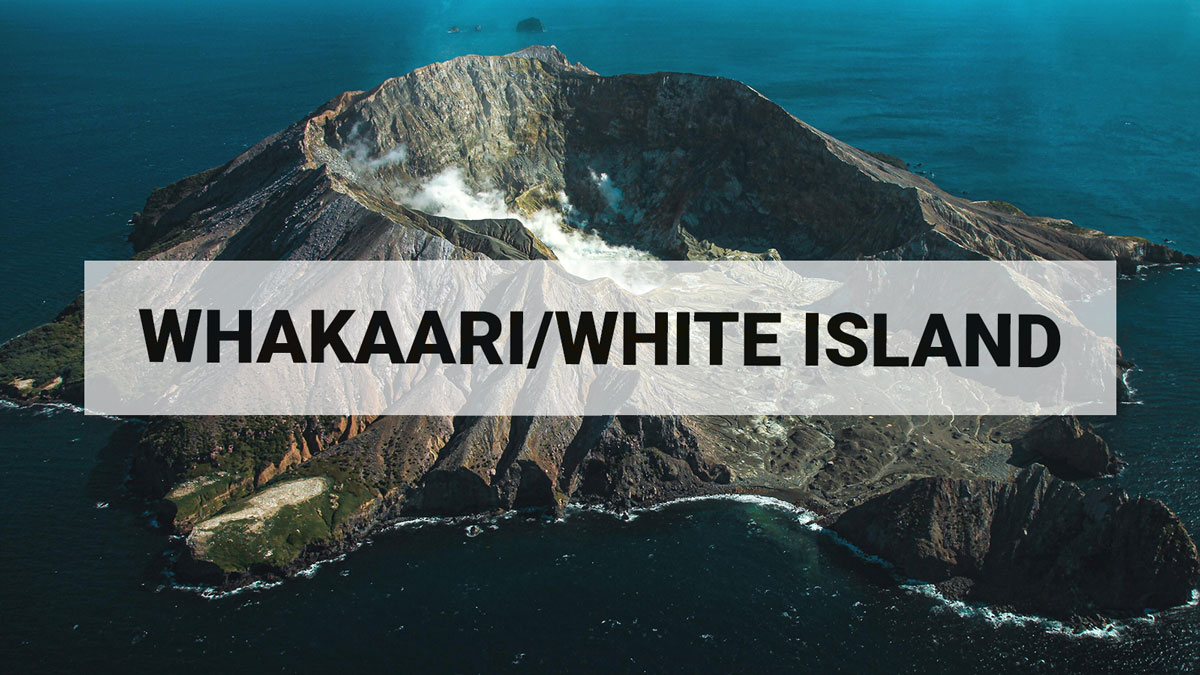
Whakaari/White Island: Volcanic unrest continues with steam and mud discharge, decreased gas emissions, steady vent temperatures and lake level fall
Recent gas and observation flights at Whakaari/White Island show a decrease in gas emissions and lake level. The vent temperatures remain steady around 240-260 °C. The volcano continues to emit traces of volcanic ash, and the effects on the ground of a small, but energetic discharge of steam and mud were observed. A state of moderate to heightened unrest continues. The Volcanic Alert Level remains at Level 2
Last week GNS scientists undertook a visual observation flight and a gas emission measurement flight. Temperature measurements of the active vent area were also made.
The gas measurements showed that emissions of volcanic gases have decreased since the last measurements on 2 November 2021. Sulphur Dioxide (SO2) has decreased to 484 tonnes per day from 681 tonnes per day. The emissions of Carbon Dioxide (CO2) decreased from 2712 to 1416 tonnes per day, while the Hydrogen Sulphide (H2S) also showed a decrease, from 38 to 19 tonnes per day. These data are consistent with gas continuing to be released from the molten material (magma) at depth beneath the volcano.
Temperatures measured in the active vent area have ranged from 202 °C to 264 °C during September-November 2021. Temperatures between 243 to 264 °C were recorded last week. In July and August 2021, the temperatures were in excess of 500-600 °C.
The level of water in the crater lake has retreated from the higher level observed earlier this month. The crater formed during the 2019 eruption is now partially filled by sediments deposited over the past couple of years.
Very weak ash emission was occurring during the observations last week; recent deposits of ash on the island are minor and only visible close to the active vents. Further intermittent ash emission may occur over the next weeks. The effects on the ground of what is thought to have been an energetic steam driven discharge of mud were observed around a new vent south of the main, high temperature active vent on the island. This new vent is near the base of the 2019 landslide area, which is also showing some movement again. This landslide has shown intermittent movement since the 2019 eruption.
Continuing cloudy and humid weather conditions during spring are allowing steam and gas plumes to form above the island on some days, but on others, the weather is often obscuring views of the island from the coast. During humid northerly conditions when volcanic gas emissions are high, volcanic fog (VOG) may reach the coast.
The current level of activity is consistent with moderate to heightened levels of unrest. As such the Volcanic Alert Level remains at 2 and the Aviation Colour Code remains at Yellow.
Equipment that provides real-time monitoring on the island remains degraded. We are continuing to work on restoration options.
The Volcanic Alert Level reflects the current level of volcanic unrest or activity and is not a forecast of future activity. While Volcanic Alert Level 2 is mostly associated with volcanic unrest hazards (including discharge of steam and hot volcanic gases, earthquakes, landslides, and hydrothermal activity), potential for eruption hazards also exists and eruptions can still occur with little or no warning.
Further information about the volcanic alert levels and what they mean can be found here.
GNS Science and the National Geohazards Monitoring Centre continue to monitor Whakaari/White Island for further changes in unrest.
Steven Sherburn
Duty Volcanologist
Media Contact: 021 574 541 or media@gns.cri.nz

